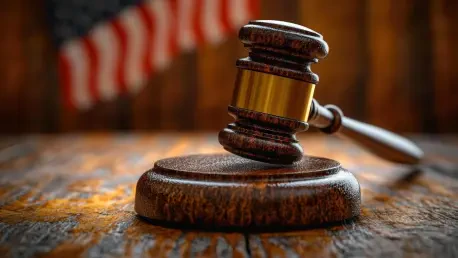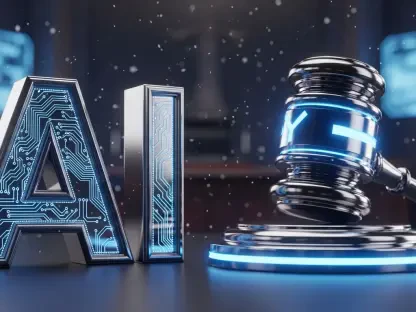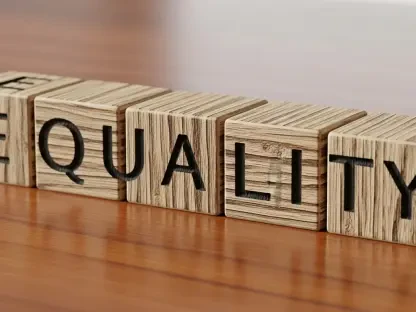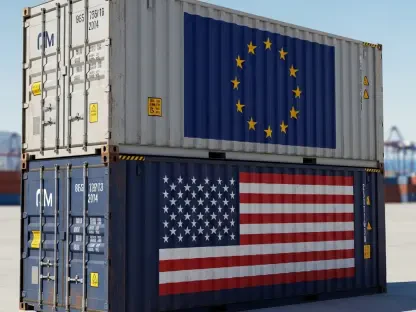In the wake of President Donald Trump’s second term, a seismic shift in environmental policy has ignited fierce legal battles across the United States, placing federal courts at the heart of a critical struggle over the nation’s ecological future. With an aggressive push to dismantle regulations addressing climate change, clean energy initiatives, and environmental justice, the administration’s sweeping cuts have thrust the judiciary into a pivotal role as both arbiter and potential check on executive power. These courtrooms are now battlegrounds where the fate of vital protections—ranging from greenhouse gas rules to grants for vulnerable communities—is being decided, often with far-reaching consequences for public health and global warming. This exploration delves into the complex judicial responses to Trump’s environmental rollbacks, examining the stark divisions among courts, the enduring influence of his judicial appointments, and the evolving legal strategies that shape these high-stakes disputes. Beyond mere legal outcomes, the implications of these decisions touch on the air quality in urban centers, the resilience of communities facing pollution, and the broader fight against climate degradation. As federal judges weigh the balance between deregulation and environmental stewardship, the outcomes could redefine policy for decades, making it essential to understand the judiciary’s stance in this unprecedented policy retreat.
A Fractured Judiciary: Early Rulings and Divisions
Nine months into Trump’s second term, federal courts stand sharply divided over the administration’s environmental rollbacks, reflecting a judiciary grappling with profound policy shifts. Out of 14 cases with substantive rulings on legal issues, the outcomes are nearly balanced: six decisions have favored the administration, five have supported challengers such as environmental advocacy groups, and three have resulted in mixed verdicts. This near-even split underscores a landscape of uncertainty, where neither side can claim definitive dominance in the legal fight over deregulation. The diversity in rulings suggests that courts are wrestling with complex interpretations of executive authority, statutory mandates, and the broader implications of weakening environmental safeguards. For advocates of stricter regulations, these early results offer a glimmer of hope that resistance is possible, yet the lack of a clear trend keeps the future of these policies in limbo, with each ruling carrying weight for subsequent challenges.
A deeper analysis reveals a concerning pattern for those opposing the rollbacks, as higher courts appear to tilt toward the administration’s agenda. While district courts have delivered some victories for challengers by halting specific executive actions, all rulings at the appeals court level have upheld Trump’s policies, with three circuit court decisions overturning lower court blocks. This emerging trend suggests that as cases escalate through the judicial system, the likelihood of favorable outcomes for deregulation increases, potentially emboldening further policy retreats. Such a pattern at the appellate level could signal a broader shift in how environmental law is interpreted, prioritizing executive discretion over regulatory continuity. The contrast between lower and higher court rulings highlights a fragmented judiciary, where the ultimate direction of environmental policy remains uncertain but increasingly influenced by the hierarchical structure of the courts.
Judicial Influence: The Weight of Trump’s Appointments
Trump’s transformative impact on the judiciary cannot be overstated, as his 251 appointments, representing 28% of all Article III judgeships, have fundamentally altered the legal landscape for environmental litigation. These appointees, spanning district courts to the Supreme Court, have already contributed to significant rulings that curb federal agency authority, creating a more favorable environment for deregulatory policies. The presence of Trump-appointed judges in key positions often shapes the tone of legal proceedings, with their interpretations frequently aligning with limited government intervention. This judicial reshaping poses a formidable challenge for environmental advocates seeking to preserve existing protections, as the ideological leanings of these judges can influence case outcomes even before arguments are fully heard. The sheer scale of these appointments ensures that Trump’s influence will persist in courtrooms long after his term, affecting environmental policy debates for years to come.
A critical development driven by this judicial shift is the Supreme Court’s embrace of the “major questions doctrine,” which restricts agencies from enacting significant policy changes without explicit congressional approval. This legal principle has empowered administrators like EPA head Lee Zeldin to pursue aggressive rollbacks with confidence that higher courts may uphold their actions as within executive bounds. The doctrine’s application in environmental cases limits the ability of agencies to address pressing issues like climate change without legislative backing, a difficult prospect in a polarized Congress. With Trump’s three Supreme Court justices contributing to a conservative majority, the judiciary often appears predisposed to favor deregulation over expansive agency power. This legal framework not only complicates challenges to current rollbacks but also sets a precedent that could hinder future environmental initiatives, marking a profound shift in how federal authority is exercised over ecological matters.
Shifting Legal Terrain: From First to Second Term
During Trump’s first term, environmental challengers enjoyed remarkable success in federal courts, with groups like the Natural Resources Defense Council securing victories in nearly 90% of their 163 lawsuits against policy rollbacks. Back then, judicial rulings frequently struck down attempts to dilute regulations on greenhouse gas emissions, toxic discharges into waterways, and energy efficiency standards, positioning courts as a robust check on deregulatory ambitions. These decisions often rested on procedural flaws or overreach in executive actions, providing a legal shield for established environmental protections. For advocacy groups and state attorneys general, the judiciary served as a reliable ally in preserving regulatory frameworks, with many rulings reinforcing the importance of scientific evidence and statutory intent in policy-making. This period established a precedent of judicial resistance to unchecked deregulation, offering a playbook for challengers to leverage in future disputes.
In stark contrast, the legal environment of Trump’s second term presents a far more formidable challenge, shaped by a judiciary transformed through extensive appointments and evolving legal doctrines. The same strategies that yielded success previously now encounter greater resistance, as courts—particularly at higher levels—show increased deference to executive actions. The administration’s pivot away from formal regulatory changes toward swift executive orders further complicates litigation, as these actions often evade traditional procedural scrutiny. Environmental groups find themselves navigating a landscape where past victories are no longer a guaranteed blueprint, forced to adapt to a bench less inclined to block deregulatory moves. This shift underscores a critical evolution in the judicial role, from a consistent barrier to a more unpredictable force, reflecting broader changes in the balance of power over environmental governance.
Executive Power Play: Sidestepping Traditional Rules
A defining feature of Trump’s second-term environmental strategy is the heavy reliance on executive orders to bypass the slow grind of formal rulemaking, accelerating the pace of deregulation. Rather than engaging in lengthy regulatory revision processes, the administration has issued directives to halt projects like offshore wind developments and terminate environmental justice grants linked to major legislative acts such as the Inflation Reduction Act. This approach prioritizes speed and immediate impact, allowing policy changes to take effect without the procedural safeguards embedded in traditional regulation. However, it also opens the door to a flurry of legal challenges, as opponents argue that such actions overstep executive authority and disregard statutory obligations. The use of executive orders as a primary tool for environmental cuts has reshaped the litigation landscape, creating a dynamic where courts must assess the legality of rapid policy shifts against a backdrop of established law.
Despite the administration’s strategic pivot, some challenges to these executive actions have found traction in district courts, demonstrating that judicial oversight can still curb overreach. Notable successes include injunctions that have allowed projects like Revolution Wind to resume off Rhode Island’s coast and protected initiatives such as New York City’s congestion pricing plan from abrupt cancellation. These rulings highlight the potential for lower courts to act as a counterbalance, enforcing legal limits on presidential directives when they conflict with existing mandates or harm public interests. Yet, the administration has also secured wins, such as the approval of the Empire Wind project despite opposition, illustrating the uneven nature of these legal battles. As cases involving executive actions progress through the judicial system, they test the boundaries of presidential power in environmental policy, with outcomes likely to influence how future administrations wield such authority in similar contexts.
Federal vs. State: A Battle for Climate Authority
The tension between federal and state authority has emerged as a significant frontier in the legal war over Trump’s environmental cuts, with the administration actively challenging states’ rights to enact independent climate policies. Lawsuits have been filed against state-level “superfund” laws in places like Vermont and New York, which seek to hold polluters financially accountable for environmental damages. These federal actions aim to curb state autonomy in addressing local ecological concerns, asserting that such policies encroach on national jurisdiction. This clash represents more than a legal dispute; it’s a fundamental question of who holds the power to protect communities from the worsening impacts of climate change. As the administration pushes for centralized control, states argue that their tailored approaches are essential for addressing region-specific challenges, setting the stage for a pivotal judicial reckoning.
Further intensifying this conflict, the administration is working to block states like Michigan and Hawaii from pursuing litigation against fossil fuel companies for damages linked to climate change, such as rising sea levels and extreme weather events. These cases, still pending rulings, underscore a broader federal effort to limit state-led accountability measures that could impose significant costs on major polluters. The outcomes of these disputes carry profound implications for environmental governance, potentially redefining the balance of power between federal oversight and state initiative. For state governments, the stakes involve not just legal precedent but the ability to safeguard their citizens from localized climate impacts when federal action falls short. Federal courts, caught in the middle, will play a decisive role in determining whether states retain the latitude to act independently or must yield to a more uniform, deregulatory national framework.
Environmental Equity at Risk: The Fight Over Grants
Among the most contentious issues in Trump’s environmental rollbacks is the cancellation of billions in grants designed to support disadvantaged communities disproportionately affected by pollution and climate change. Programs like the $27 billion Greenhouse Gas Reduction Fund, often referred to as the “green bank,” and the $7 billion Solar for All initiative aimed to address systemic inequities by funding clean energy and emission reduction projects in vulnerable areas. The abrupt termination of these initiatives has sparked a wave of lawsuits from grantees and advocacy groups, who argue that such cuts violate statutory commitments and exacerbate environmental injustice. These legal challenges are not merely about reinstating funding; they represent a broader struggle to ensure that the most impacted populations receive the resources needed to combat pollution and transition to sustainable energy solutions. The judiciary’s response to these cases will signal how deeply environmental equity factors into legal interpretations of executive actions.
Initial rulings in district courts offered a ray of hope for grantees, with some judges issuing decisions to protect these programs from cancellation, recognizing the profound harm caused by their termination. However, this optimism has been tempered by appeals court reversals and Supreme Court emergency rulings via the “shadow docket,” a process criticized for its lack of transparency and limited briefing. These higher court interventions have redirected many cases to the Court of Federal Claims, a venue where remedies are often restricted to monetary compensation rather than policy reinstatement, significantly weakening the ability to restore critical initiatives. This jurisdictional shift poses a severe setback for environmental justice efforts, as it prioritizes financial settlements over systemic change. The ongoing legal fight over these grants reveals a judiciary grappling with not just legal technicalities but the moral weight of protecting society’s most vulnerable from the fallout of deregulatory policies.
Future Flashpoint: The Endangerment Finding Debate
One of the most consequential battles on the horizon centers on the proposed repeal of the EPA’s 2007 endangerment finding, a cornerstone of climate regulation declaring greenhouse gases a danger to human health and welfare. Upheld by the Supreme Court in the landmark Massachusetts v. EPA decision, this finding underpins all EPA rules addressing emissions from power plants, vehicles, and industrial sources. Its potential reversal, spearheaded by EPA Administrator Lee Zeldin, could dismantle decades of climate policy, rendering the agency powerless to act on global warming without new congressional authorization—a remote possibility given current political gridlock. The stakes of this proposal extend beyond legal theory, touching on the real-world impacts of unchecked emissions on public health, extreme weather, and ecological stability. As this issue inches toward litigation, federal courts face a defining moment in determining whether foundational environmental law will stand or crumble under deregulatory pressure.
The proposal to repeal the endangerment finding has already elicited a massive public response, with over 568,000 comments submitted to the EPA, reflecting widespread concern over the potential rollback. The agency is legally obligated to address these comments with reasoned responses in any final decision, adding a layer of procedural complexity that could influence judicial review. With a conservative Supreme Court majority, including three Trump appointees, the administration may anticipate a favorable ruling if the case reaches the highest court, especially under doctrines limiting agency authority. However, past Supreme Court insistence on holding agencies accountable for robust justifications—as seen in rulings against other administrations—will test whether similar scrutiny applies here. The judiciary’s handling of this issue will not only shape climate policy but also signal how far courts are willing to go in upholding or dismantling long-standing environmental protections in the face of executive challenges.
Path Forward: Navigating an Uncertain Judicial Landscape
Reflecting on the judicial responses to Trump’s environmental cuts, the past months revealed a deeply divided federal court system, where early rulings split almost evenly but higher courts consistently favored the administration’s deregulatory moves. The influence of Trump-appointed judges, coupled with legal shifts like the “major questions doctrine,” tipped the scales against environmental advocates, while Supreme Court emergency decisions further complicated challenges to grant terminations for disadvantaged communities. Significant battles, such as the potential repeal of the EPA’s endangerment finding, stood as looming tests of judicial resolve, with outcomes poised to redefine climate regulation. Despite a more hostile legal environment compared to Trump’s first term, environmental groups and state actors persisted, banking on judicial independence to limit executive overreach, even as uncertainty dominated with many cases unresolved.
Looking ahead, the focus must shift to strategic adaptation and sustained advocacy to navigate this challenging judicial terrain. Environmental litigants should prioritize building robust coalitions with state governments and community organizations to amplify their legal efforts, while also exploring alternative avenues like public pressure and transparency initiatives to hold agencies accountable. Courts must be urged to maintain rigorous scrutiny of executive actions, ensuring that procedural and statutory limits are enforced regardless of ideological leanings. Additionally, policymakers and activists should prepare for long-term engagement, recognizing that judicial outcomes may necessitate legislative or grassroots responses to safeguard environmental protections. The road forward demands resilience and innovation, as the judiciary’s role in balancing deregulation against ecological imperatives remains a critical, yet unpredictable, force in shaping the nation’s environmental future.









